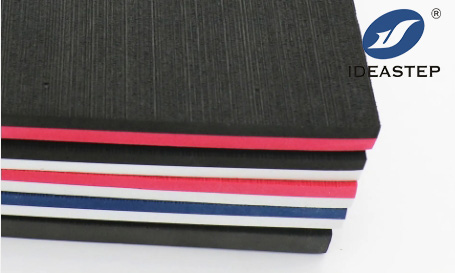When it comes to selecting EVA (ethylene-vinyl acetate) foam, the options can be overwhelming. With so many types, grades, and densities available, it can be challenging to determine which one is best for your specific application. To help you make an informed choice, we’ve compiled this comprehensive guide on how to choose the right EVA foam for your needs.

Understand EVA Foam Types and Grades
EVA foam comes in various types and grades, each with its own unique properties and applications. Some common types include open-cell and closed-cell foam, while grades range from soft to firm and offer different levels of compressibility, durability, and flexibility. Understanding the differences between types and grades is crucial for selecting the right foam for your specific use case.
Consider Density
Density is a key factor in EVA foam performance. It determines the material’s stiffness, weight, and durability. High-density foam offers superior durability and structural support, while low-density foam is more compressible and flexible. Choose the density based on your specific needs, such as load-bearing capacity, comfort, or flexibility.
Examine Environmental Factors
EVA foam’s performance can be affected by environmental factors such as temperature, moisture, and UV exposure. Consider the conditions in which your EVA foam will be used and choose a grade that can withstand these elements. For example, if your application will be exposed to outdoor elements, choose a grade that offers UV resistance.
Determine Durability Requirements
Durability is a critical aspect of EVA foam selection. Determine how long you need your EVA foam to last and choose a grade that offers the necessary durability. High-density foams tend to offer better durability, but softer grades may wear out more quickly. Consider the wear and tear your foam will face and choose accordingly.
Explore Applications and Uses
The intended application for your EVA foam plays a significant role in your selection process. Different applications require different properties. For example, EVA foam used in floor mats should offer good compressibility and comfort, while foams used in protective packaging require good durability and structural support. Familiarize yourself with the specific uses of EVA foam and choose accordingly.
Cost Considerations
Finally, cost is an important factor in EVA foam selection. Compare the prices of various types, grades, and densities to determine which one offers the best value for your specific application. Be mindful of the long-term cost of the foam, including maintenance, replacement frequency, and any associated expenses.
In conclusion, choosing the right EVA foam requires a thorough understanding of the available options and their properties. By considering factors such as type, grade, density, environmental factors, durability requirements, applications, and cost, you can make an informed decision that meets your specific needs while staying within budget. With this guide as a resource, you’ll be well on your way to selecting the perfect EVA foam for your project.
